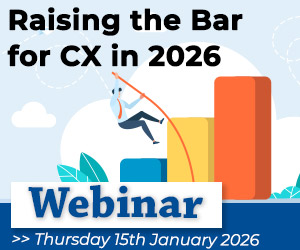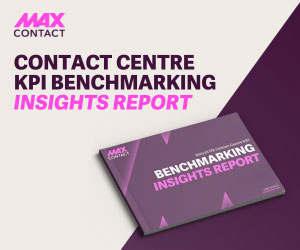How to Win the Post-Covid Race?
As various countries begin to emerge from lockdown later this year, we are likely to see a surge in consumer spending. With leisure and retail activities curtailed, some households have accumulated significant extra cash during the pandemic – to the extent that economists are talking about billions, or even trillions, of ‘excess’ savings.
For business, this raises some significant questions:
- How much of these savings will consumers spend or save when lockdown restrictions ease?
- Where are they likely to spend them?
- What can brands do to steer this ‘snapback’ spending boom in their own direction?
The third of these questions is part of a much bigger issue for brands: how to engage with consumers when their behaviours have changed during the pandemic. In terms of customer interaction and value creation, brands must meet new expectations for a digitalized customer journey, even when the physical has re-opened. Sectors from retail/e-commerce to energy to banking/insurance will be affected by this, and global brands must also manage differing exit timings and consumer sentiment in different countries.
Excess Savings Could Amount to Trillions
The scale of savings amassed during the pandemic is vast. In the US, for example, consumers put away about $1.7 trillion in additional savings from the start of the pandemic through to January, say Bloomberg Economics. In the UK, there’s an additional savings stockpile of well over £125 billion, and in France an estimated €200 billion. The same is happening in other countries too, and these are all ‘excess’ savings, i.e. in addition to the amounts consumers would save in ‘normal’ times.
Most of this stems from the decline in household consumption, which, according to figures from the European Commission in 2020, was down almost a fifth year on year. In some parts of Europe, consumers have been saving up to five times more than in previous years. This is partly due to reduced commuting costs and opportunities to spend and partly due to fears about the economic prospects ahead, especially when anti-layoff and furlough measures come to an end.
Spending Versus Saving?
From brands to central bankers, everyone is keen to analyse what consumers are going to do with this cash-pile – not least because it could impact inflation and GDP as well as businesses’ own balance sheets. So, what are the signs telling us?
Estimates of the proportion of excess savings likely to be spent range from 5% to 25% or more. Many governments are looking to encourage spending rather than saving, especially in economies where the savings ratio is already high. But even with the most conservative 5% estimates, there should be billions of pent-up spending waiting to happen around Europe, LatAm and elsewhere.
Six Key Sectors Likely to Benefit
Surveys among consumers show a few obvious candidates for pent-up spending:
Tourism and Hospitality: Holidays will be high on everyone’s wishlists, though it remains to be seen if tastes have changed – long-haul versus short-haul, city-breaks versus escaping the crowds. Safety and flexibility will clearly be high on consumers’ priority lists, and the industry will need to cater for this.
Home Moves and Improvements: Across the generations, people are talking about wanting more or better space for living, working and entertaining. They’re moving, doing home makeovers, putting their extra savings into new kitchens, bathrooms, work@home or garden areas.
Retail: This is another obvious candidate for recovery, at all price ranges. When China exited lockdown in 2020, there was a surge of so-called ‘revenge spending’ on luxury goods – one French luxury store in Guangzhou, China, saw $2.7 million spent in a single day when it reopened last year, according to Bloomberg. However, analysts warn that not every part of the retail sector will automatically benefit post-pandemic. One example given is electrical: if consumers already bought larger TVs, home cinemas or more powerful computers in lockdown, they won’t be doing the same again six months later.
Mobility: Some people report they are going to put their ‘Covid nestegg’ towards the higher-end car they have always yearned for, but we’re also seeing new patterns in mobility emerge as a result of concerns for the environment, new working patterns or a desire to be fitter. That could see new spending patterns on anything from electric vehicles to bikes to shared mobility solutions.
Services: The obvious example here is haircuts and beauty treatments, but the list goes much wider. One possible result of people having to spend so much time in lockdown watching their own faces on Zoom, Microsoft Teams, Google Meet etc is apparently a growing demand for cosmetic surgery. Dating apps have also been predicted to thrive post-lockdown.
Banking and Financial Services: As people seek longer-term vehicles for their savings, the general shift to digital may lead them to look at new providers. The same may apply to other financial planning, from insurance to investments. In these sectors, as in all the sectors above, previous brand loyalties cannot be relied upon – customers can be won but also lost.
In Parallel: Reduction of Speed
We should remember, of course, that not all consumers have managed to save more during the pandemic. Millions of people have had, or will have, their earnings reduced or fear for their future. A survey of post-crisis spending by EY found that more than a third of consumers intend to spend less than before, with many of those planning to make deep cuts.
With these consumers too, brands will need to understand and adapt to new behaviours. Price may determine their loyalty, but pressured consumers may also be more alert to the quality of the customer experience they receive. This will be particularly prevalent in sectors such as energy and telecoms/media, where the crisis has forced many stay-at-home consumers to spend more.
Success Rests on Understanding Post-Covid Consumers
Against this background, all brands will need to revisit their segmentation when we begin to emerge from Covid, using tools such as social listening and data analytics:
- Whose spending capacity has changed?
- Who is buying differently and how?
- Whose loyalty has wavered and how it can be won back?
- Where do new opportunities lie and where / how to personalize?
Brands have always needed to know this, but what they used to know may no longer apply.
They also need to revisit their customer management and interaction. There’s likely to be some return to physical spending post-pandemic, but a majority of consumers expect to shop and transact more online than they did before. Digital transformation and optimization remain a priority in all sectors: brands seeking to gain from post-Covid spending sprees should aim to excel at every digital touchpoint along the customer journey.
For example,
- In Sales, consumers may still want the access to the virtual showrooms or virtual ‘try-ons’ they have had during Covid, even when stores are open again; in e-sales the right balance between self-service and the human touch will remain crucial
- In Customer Care, the ‘omni’ in ‘omnichannel’ will continue to expand. In sectors from banking to retail to leisure, consumers will expect a widening choice of interfaces and channels, from self-care chatbots to WhatsApp to different web interfaces to personalized help from an informed, empathetic advisor
- In Technical Support and User Assistance, Covid-19 saw some brands introduce new digital approaches such as remote video support; many consumers will prefer the convenience of this, even after traditional assistance routes become available again.
Successful Brands Will Also Be Seamless
Also a growing priority for consumers post-Covid will be seamless interaction. Whether they’re buying a product, asking about a payment, or reporting a problem with their energy supply, consumers will expect flawless communication and integration – for example, between brands’ physical and digital operations, different channels of interaction, or back-office and front-office processes. Moving their own lives online has raised consumer expectations on this – they don’t want to hear that a bank, energy provider or store’s IT systems won’t permit it.
As brands look to encourage and attract post-Covid spending, they must pay intense attention to customer experience, digital excellence and value creation. Whether they’re selling luxury goods, services or energy contracts, they’ll need to look at elements such as data management and analysis, process optimization, end-to-end integration, and the balance of automation versus personalization. And they’ll need to do it this year, not next.
With all these elements, Comdata is here to help.
Author: Guest Author
Published On: 4th May 2021
Read more about - Guest Blogs, Comdata
Recommended Articles
The scale of savings amassed during the pandemic is vast. In the US, for example, consumers put away about $1.7 trillion in additional savings from the start of the pandemic through to January, say Bloomberg Economics. In the UK, there’s an additional savings stockpile of well over £125 billion, and in France an estimated €200 billion. The same is happening in other countries too, and these are all ‘excess’ savings, i.e. in addition to the amounts consumers would save in ‘normal’ times.
Most of this stems from the decline in household consumption, which, according to figures from the European Commission in 2020, was down almost a fifth year on year. In some parts of Europe, consumers have been saving up to five times more than in previous years. This is partly due to reduced commuting costs and opportunities to spend and partly due to fears about the economic prospects ahead, especially when anti-layoff and furlough measures come to an end.
Spending Versus Saving?
From brands to central bankers, everyone is keen to analyse what consumers are going to do with this cash-pile – not least because it could impact inflation and GDP as well as businesses’ own balance sheets. So, what are the signs telling us?
Estimates of the proportion of excess savings likely to be spent range from 5% to 25% or more. Many governments are looking to encourage spending rather than saving, especially in economies where the savings ratio is already high. But even with the most conservative 5% estimates, there should be billions of pent-up spending waiting to happen around Europe, LatAm and elsewhere.
Six Key Sectors Likely to Benefit
Surveys among consumers show a few obvious candidates for pent-up spending:
Tourism and Hospitality: Holidays will be high on everyone’s wishlists, though it remains to be seen if tastes have changed – long-haul versus short-haul, city-breaks versus escaping the crowds. Safety and flexibility will clearly be high on consumers’ priority lists, and the industry will need to cater for this.
Home Moves and Improvements: Across the generations, people are talking about wanting more or better space for living, working and entertaining. They’re moving, doing home makeovers, putting their extra savings into new kitchens, bathrooms, work@home or garden areas.
Retail: This is another obvious candidate for recovery, at all price ranges. When China exited lockdown in 2020, there was a surge of so-called ‘revenge spending’ on luxury goods – one French luxury store in Guangzhou, China, saw $2.7 million spent in a single day when it reopened last year, according to Bloomberg. However, analysts warn that not every part of the retail sector will automatically benefit post-pandemic. One example given is electrical: if consumers already bought larger TVs, home cinemas or more powerful computers in lockdown, they won’t be doing the same again six months later.
Mobility: Some people report they are going to put their ‘Covid nestegg’ towards the higher-end car they have always yearned for, but we’re also seeing new patterns in mobility emerge as a result of concerns for the environment, new working patterns or a desire to be fitter. That could see new spending patterns on anything from electric vehicles to bikes to shared mobility solutions.
Services: The obvious example here is haircuts and beauty treatments, but the list goes much wider. One possible result of people having to spend so much time in lockdown watching their own faces on Zoom, Microsoft Teams, Google Meet etc is apparently a growing demand for cosmetic surgery. Dating apps have also been predicted to thrive post-lockdown.
Banking and Financial Services: As people seek longer-term vehicles for their savings, the general shift to digital may lead them to look at new providers. The same may apply to other financial planning, from insurance to investments. In these sectors, as in all the sectors above, previous brand loyalties cannot be relied upon – customers can be won but also lost.
In Parallel: Reduction of Speed
We should remember, of course, that not all consumers have managed to save more during the pandemic. Millions of people have had, or will have, their earnings reduced or fear for their future. A survey of post-crisis spending by EY found that more than a third of consumers intend to spend less than before, with many of those planning to make deep cuts.
With these consumers too, brands will need to understand and adapt to new behaviours. Price may determine their loyalty, but pressured consumers may also be more alert to the quality of the customer experience they receive. This will be particularly prevalent in sectors such as energy and telecoms/media, where the crisis has forced many stay-at-home consumers to spend more.
Success Rests on Understanding Post-Covid Consumers
Against this background, all brands will need to revisit their segmentation when we begin to emerge from Covid, using tools such as social listening and data analytics:
- Whose spending capacity has changed?
- Who is buying differently and how?
- Whose loyalty has wavered and how it can be won back?
- Where do new opportunities lie and where / how to personalize?
Brands have always needed to know this, but what they used to know may no longer apply.
They also need to revisit their customer management and interaction. There’s likely to be some return to physical spending post-pandemic, but a majority of consumers expect to shop and transact more online than they did before. Digital transformation and optimization remain a priority in all sectors: brands seeking to gain from post-Covid spending sprees should aim to excel at every digital touchpoint along the customer journey.
For example,
- In Sales, consumers may still want the access to the virtual showrooms or virtual ‘try-ons’ they have had during Covid, even when stores are open again; in e-sales the right balance between self-service and the human touch will remain crucial
- In Customer Care, the ‘omni’ in ‘omnichannel’ will continue to expand. In sectors from banking to retail to leisure, consumers will expect a widening choice of interfaces and channels, from self-care chatbots to WhatsApp to different web interfaces to personalized help from an informed, empathetic advisor
- In Technical Support and User Assistance, Covid-19 saw some brands introduce new digital approaches such as remote video support; many consumers will prefer the convenience of this, even after traditional assistance routes become available again.
Successful Brands Will Also Be Seamless
Also a growing priority for consumers post-Covid will be seamless interaction. Whether they’re buying a product, asking about a payment, or reporting a problem with their energy supply, consumers will expect flawless communication and integration – for example, between brands’ physical and digital operations, different channels of interaction, or back-office and front-office processes. Moving their own lives online has raised consumer expectations on this – they don’t want to hear that a bank, energy provider or store’s IT systems won’t permit it.
As brands look to encourage and attract post-Covid spending, they must pay intense attention to customer experience, digital excellence and value creation. Whether they’re selling luxury goods, services or energy contracts, they’ll need to look at elements such as data management and analysis, process optimization, end-to-end integration, and the balance of automation versus personalization. And they’ll need to do it this year, not next.
With all these elements, Comdata is here to help.
Author: Guest Author
Published On: 4th May 2021
Read more about - Guest Blogs, Comdata
Recommended Articles
Surveys among consumers show a few obvious candidates for pent-up spending:
Tourism and Hospitality: Holidays will be high on everyone’s wishlists, though it remains to be seen if tastes have changed – long-haul versus short-haul, city-breaks versus escaping the crowds. Safety and flexibility will clearly be high on consumers’ priority lists, and the industry will need to cater for this.
Home Moves and Improvements: Across the generations, people are talking about wanting more or better space for living, working and entertaining. They’re moving, doing home makeovers, putting their extra savings into new kitchens, bathrooms, work@home or garden areas.
Retail: This is another obvious candidate for recovery, at all price ranges. When China exited lockdown in 2020, there was a surge of so-called ‘revenge spending’ on luxury goods – one French luxury store in Guangzhou, China, saw $2.7 million spent in a single day when it reopened last year, according to Bloomberg. However, analysts warn that not every part of the retail sector will automatically benefit post-pandemic. One example given is electrical: if consumers already bought larger TVs, home cinemas or more powerful computers in lockdown, they won’t be doing the same again six months later.
Mobility: Some people report they are going to put their ‘Covid nestegg’ towards the higher-end car they have always yearned for, but we’re also seeing new patterns in mobility emerge as a result of concerns for the environment, new working patterns or a desire to be fitter. That could see new spending patterns on anything from electric vehicles to bikes to shared mobility solutions.
Services: The obvious example here is haircuts and beauty treatments, but the list goes much wider. One possible result of people having to spend so much time in lockdown watching their own faces on Zoom, Microsoft Teams, Google Meet etc is apparently a growing demand for cosmetic surgery. Dating apps have also been predicted to thrive post-lockdown.
Banking and Financial Services: As people seek longer-term vehicles for their savings, the general shift to digital may lead them to look at new providers. The same may apply to other financial planning, from insurance to investments. In these sectors, as in all the sectors above, previous brand loyalties cannot be relied upon – customers can be won but also lost.
In Parallel: Reduction of Speed
We should remember, of course, that not all consumers have managed to save more during the pandemic. Millions of people have had, or will have, their earnings reduced or fear for their future. A survey of post-crisis spending by EY found that more than a third of consumers intend to spend less than before, with many of those planning to make deep cuts.
With these consumers too, brands will need to understand and adapt to new behaviours. Price may determine their loyalty, but pressured consumers may also be more alert to the quality of the customer experience they receive. This will be particularly prevalent in sectors such as energy and telecoms/media, where the crisis has forced many stay-at-home consumers to spend more.
Success Rests on Understanding Post-Covid Consumers
Against this background, all brands will need to revisit their segmentation when we begin to emerge from Covid, using tools such as social listening and data analytics:
- Whose spending capacity has changed?
- Who is buying differently and how?
- Whose loyalty has wavered and how it can be won back?
- Where do new opportunities lie and where / how to personalize?
Brands have always needed to know this, but what they used to know may no longer apply.
They also need to revisit their customer management and interaction. There’s likely to be some return to physical spending post-pandemic, but a majority of consumers expect to shop and transact more online than they did before. Digital transformation and optimization remain a priority in all sectors: brands seeking to gain from post-Covid spending sprees should aim to excel at every digital touchpoint along the customer journey.
For example,
- In Sales, consumers may still want the access to the virtual showrooms or virtual ‘try-ons’ they have had during Covid, even when stores are open again; in e-sales the right balance between self-service and the human touch will remain crucial
- In Customer Care, the ‘omni’ in ‘omnichannel’ will continue to expand. In sectors from banking to retail to leisure, consumers will expect a widening choice of interfaces and channels, from self-care chatbots to WhatsApp to different web interfaces to personalized help from an informed, empathetic advisor
- In Technical Support and User Assistance, Covid-19 saw some brands introduce new digital approaches such as remote video support; many consumers will prefer the convenience of this, even after traditional assistance routes become available again.
Successful Brands Will Also Be Seamless
Also a growing priority for consumers post-Covid will be seamless interaction. Whether they’re buying a product, asking about a payment, or reporting a problem with their energy supply, consumers will expect flawless communication and integration – for example, between brands’ physical and digital operations, different channels of interaction, or back-office and front-office processes. Moving their own lives online has raised consumer expectations on this – they don’t want to hear that a bank, energy provider or store’s IT systems won’t permit it.
As brands look to encourage and attract post-Covid spending, they must pay intense attention to customer experience, digital excellence and value creation. Whether they’re selling luxury goods, services or energy contracts, they’ll need to look at elements such as data management and analysis, process optimization, end-to-end integration, and the balance of automation versus personalization. And they’ll need to do it this year, not next.
With all these elements, Comdata is here to help.
Author: Guest Author
Published On: 4th May 2021
Read more about - Guest Blogs, Comdata
Recommended Articles
Against this background, all brands will need to revisit their segmentation when we begin to emerge from Covid, using tools such as social listening and data analytics:
- Whose spending capacity has changed?
- Who is buying differently and how?
- Whose loyalty has wavered and how it can be won back?
- Where do new opportunities lie and where / how to personalize?
Brands have always needed to know this, but what they used to know may no longer apply.
They also need to revisit their customer management and interaction. There’s likely to be some return to physical spending post-pandemic, but a majority of consumers expect to shop and transact more online than they did before. Digital transformation and optimization remain a priority in all sectors: brands seeking to gain from post-Covid spending sprees should aim to excel at every digital touchpoint along the customer journey.
For example,
- In Sales, consumers may still want the access to the virtual showrooms or virtual ‘try-ons’ they have had during Covid, even when stores are open again; in e-sales the right balance between self-service and the human touch will remain crucial
- In Customer Care, the ‘omni’ in ‘omnichannel’ will continue to expand. In sectors from banking to retail to leisure, consumers will expect a widening choice of interfaces and channels, from self-care chatbots to WhatsApp to different web interfaces to personalized help from an informed, empathetic advisor
- In Technical Support and User Assistance, Covid-19 saw some brands introduce new digital approaches such as remote video support; many consumers will prefer the convenience of this, even after traditional assistance routes become available again.
Successful Brands Will Also Be Seamless
Also a growing priority for consumers post-Covid will be seamless interaction. Whether they’re buying a product, asking about a payment, or reporting a problem with their energy supply, consumers will expect flawless communication and integration – for example, between brands’ physical and digital operations, different channels of interaction, or back-office and front-office processes. Moving their own lives online has raised consumer expectations on this – they don’t want to hear that a bank, energy provider or store’s IT systems won’t permit it.
As brands look to encourage and attract post-Covid spending, they must pay intense attention to customer experience, digital excellence and value creation. Whether they’re selling luxury goods, services or energy contracts, they’ll need to look at elements such as data management and analysis, process optimization, end-to-end integration, and the balance of automation versus personalization. And they’ll need to do it this year, not next.
With all these elements, Comdata is here to help.
Author: Guest Author
Published On: 4th May 2021
Read more about - Guest Blogs, Comdata
Recommended Articles
Published On: 4th May 2021
Read more about - Guest Blogs, Comdata





































